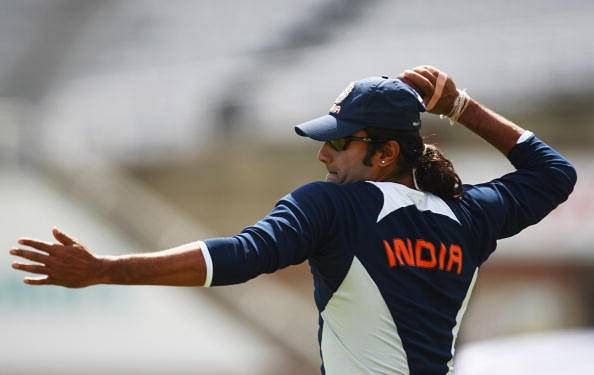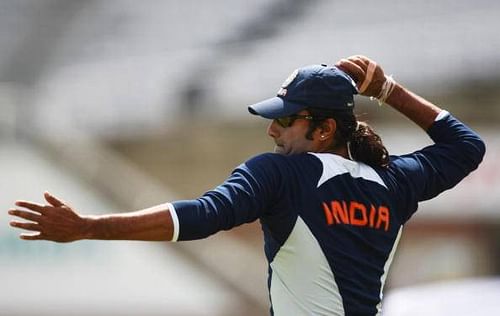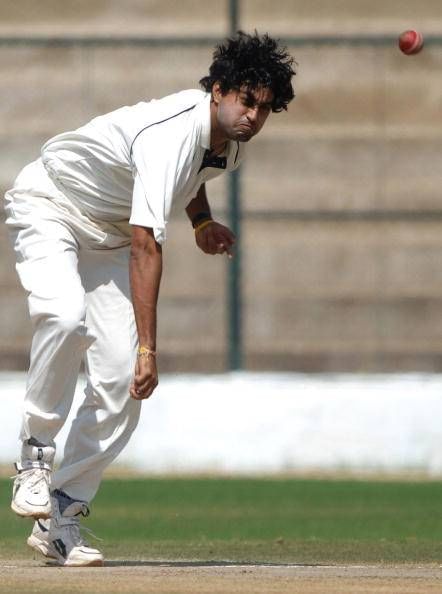
Ranadeb Bose: The spearhead that could have been
When one remembers the 60s and 70s era of Indian cricket, the first thing that comes to the mind is the quartet of spinners.
Bishen Singh Bedi, Erapalli Prasanna, Bhagwat Chandrashekhar and Srinivas Venkataraghavan almost had their own dominant streak at a time when every batsman feared the fast bowlers from West Indies and the Dennis Lille-Jeff Thomson duo from Australia.
It was only with the emergence of Kapil Dev in the late 70s and 80s that the world started recognizing India as a country that could produce quality quick bowlers. There were others too- the likes of Karsan Ghavri, Syed Abid Ali before him- but they couldn't quite create as big an impact as Kapil did.
Along with him came many others- Roger Binny, Chetan Sharma etc- and did well for a brief time. During Kapil’s final few years in the game, Javagal Srinath emerged.
Srinath had a very good bowling partner in Venkatesh Prasad while playing for India, and during his final stretch in the international game, saw the development and further blossoming of Zaheer Khan.
Zaheer, in a sense, can be considered the next great Indian bowler after Kapil. Srinath at his prime was very good, but he couldn't help India win abroad as frequently as he would’ve liked.
During the time that Zaheer was starting to create an impression on the men who matter, another pace bowler was also looking to come out and show what he was made of.
Ranadeb Bose from Bengal made his first-class debut in the 1998/99 season and with some impressive performances for Bengal over the course of the next few years, earned himself a call-up to a 30-member pre-season development camp in Bangalore in 2005.
It was the first assembling of the players under Greg Chappell- the coach who was responsible for some bittersweet memories imparted upon Indian cricket.
Unfortunately, though, he didn't make the cut to the eventually curtailed team and was back to the grind of domestic cricket.
The almost second-chance
Any bowler who featured in the domestic scene those days would tell you that it wasn't the easiest of tasks to run in every ball and bowl on barren Indian pitches. But to be successful on such decks, to come close to entering the senior setup before having to return to the first-class fold can only be heartbreaking.
But that didn't seem to be the case with Ranadeb. He returned to his domestic side and continued to be amongst the highest wicket-takers. He finished on top of the wicket-taking charts in the 2006/07 Ranji season with a haul of 57 scalps in 8 matches at an average of 14.22 and his exploits saw Bengal enter the final of India’s premier competition where they lost to Mumbai.
There was one other aspect to his performance during that season. Out of the 10658 balls that he bowled in the entire season, not a single was overstepped.
He later revealed in an interview about the thought that he considered the delivery to be illegal, if the bowler’s feet had gone beyond the popping crease.
His tremendous exploits couldn't be ignored and despite not featuring in the World Cup squad, he was picked for India’s tour to England in 2007. It was a memorable tour for the visitors but perhaps the one that hammered rang the knell for Ranadeb’s India dreams.
After India had won a famous Test at Trent Bridge, they headed to Leicester to play in a three-day game against Sri Lanka ‘A’ at Grace Road. Ranadeb was given the new ball as Sri Lanka opted to bat first and he responded with a five-wicket haul in the 1st innings to help bowl them out for 266.
Any such performance would generally make you a strong contender for a slot in main XI, but that didn't prove to be the case. Dravid decided to persist with the winning combination and the maverick S Sreesanth was retained for the match.
After not finding a place in the limited-overs leg of the tour, he returned to India and continued to lead the Bengal attack. The wickets continued to come, but at the end of 2010/11 season, the one which saw him finish last in the wicket-takers list, it was all over for him.
He took 317 wickets in 91 First-Class matches and 126 wickets in 82 List-A matches. What could have prevented him from playing for India? Talent? Hard work?
Maybe the fact that he did all the good work while the management required different kind of cricketers. He bowled not an express pace, but quick enough to land batsman in trouble. But it was in that phase that selectors looked to go for out-and-out pace bowlers. That perhaps explains the reasoning behind Munaf Patel, Sreesanth, VRV Singh etc finding a place ahead of him.
Maybe in today’s times, when a captain like MS Dhoni is looking for bowlers with more accuracy than pace, he might have had a better chance of playing for India.
Is he a coach to reckon with in the future?
Ranadeb may not have tasted success as an international cricketer, but after leaving the game, he seems to have made yet another impression on the global front, this time as a coach.
In June 2015, India were rattled by Bangladesh on their home turf. The wrecker-in-chief proved to be a 19-year-old left-arm pacer, Mustafizur Rahman, whose change of pace and cutters proved out to be too good for some of the most established names in the limited-overs format.
If you thought that a local coach had a hand in his success in that series and beyond, then you were wrong. It is Ranadeb who deserves credit for Mustafizur’s stunning performance, as he helped him make technical adjustments like sorting his wrist position, his run-up, and his release.
In the last 15 years, India have had many foreign coaches, and over a period of time, there have been talks about how the setup needs to start producing coaches who would look after the youngsters. Hopefully in a few years, Ranadeb would be seen unearthing a few Mustafizurs in India as well.

